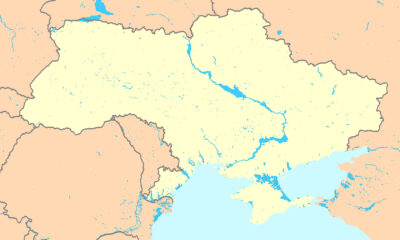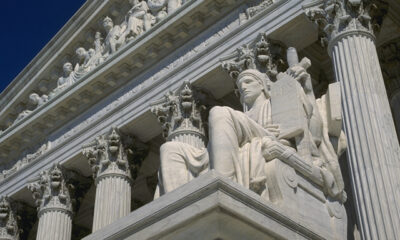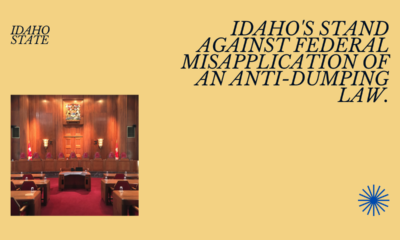Judicial
Elections Clause case goes to respondents
The Supreme Court, in Moore v. Harper, the celebrated Elections Clause case, rejected the independent legislature theory of redistricting.
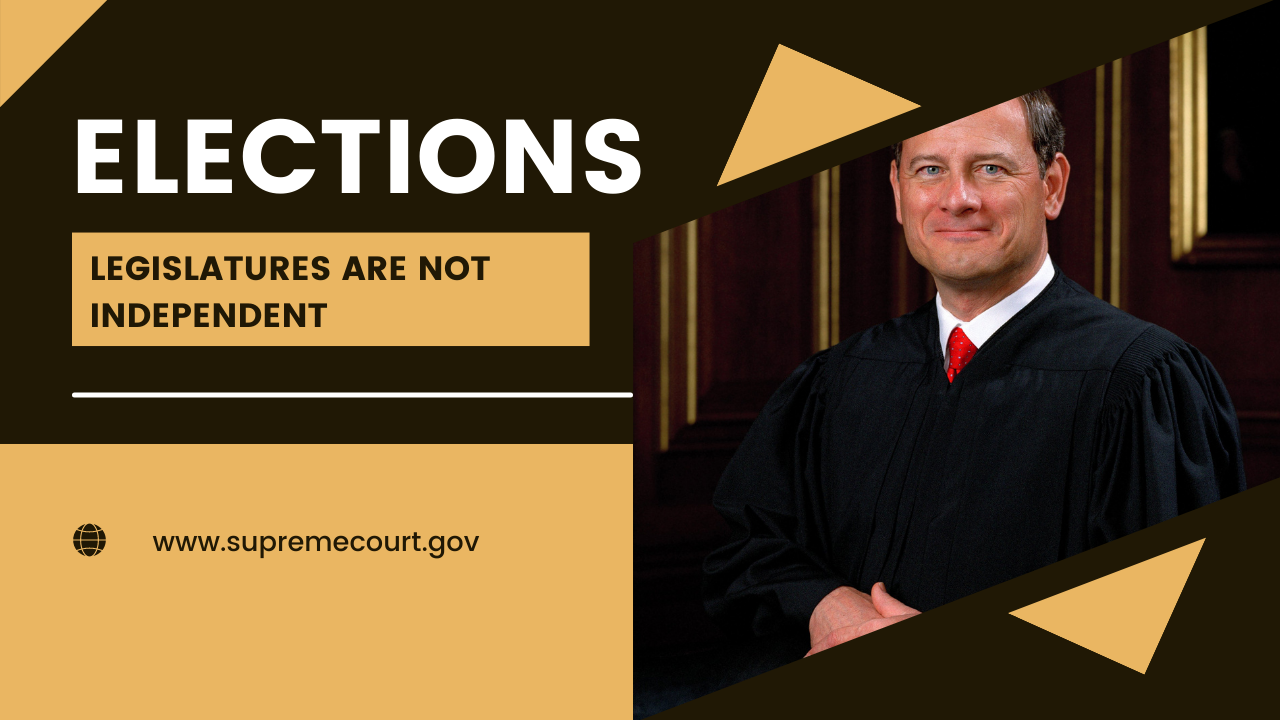
As CNAV predicted, the case of Moore v. Harper (21-1271, slip op.) went 6-3 for the respondents. The Supreme Court killed once and for all the “independent legislature theory” for elections of Senators, Representatives – and Presidential Electors.
The Elections Clause does not make legislatures independent
The Supreme Court released its opinion this morning.
In it they held, first, that they had jurisdiction on the matter. Doubt had set in after the North Carolina Supreme Court reversed its earlier rulings on the matter. Chief Justice Roberts, writing for the Court, took note of the various rulings and reversals. But he left out one decisive, though perhaps legally immaterial, element. Which is that Rep. Timothy K. Moore (R-Cleveland, N.C.), Speaker of the North Carolina House, petitioned for a rehearing after the North Carolina Supreme Court had changed its composition. North Carolina’s voters, at Midterms, had changed the Court to a clear majority Republican court.
But in rearguing his case in North Carolina, Speaker Moore did not ask that Court to give him back his original 2021 Congressional district maps. Instead, presumably, North Carolina will use the remedial maps the legislature submitted, which the pre-Midterms Court had similarly rejected. Because the North Carolina court did not reinstate the original maps, the United States Supreme Court considered the controversy live.
Then, in ruling on the merits, the Supreme Court held that the Elections Clause of the Constitution did not vest the power to draw Federal congressional districts in the legislature alone. The Court held specifically:
- The Elections Clause existed to cut Congress out of the decision-making process,
- District drawing is still a legislative act, subject to State (but not Federal) judicial review, but:
- That judicial review is not absolute, and State courts must defer to Federal law and Constitution.
Concurrence and dissent
Justices Amy Coney Barrett, Brett Kavanaugh, Ketanji Brown Jackson, Elena Kagan, and Sonia Sotomayor formed the majority. Justice Kavanaugh wrote a brief concurrence, suggesting the standard of federal restriction of State judicial review should be that of Chief Justice William Rehnquist’s concurrence in an earlier election case. Bush v. Gore, 531 U.S. 98, 113 (2000).
On the other hand, Justice Clarence Thomas dissented. First, he held that the case was moot, even though Speaker Moore hadn’t asked for his 2021 maps back. As far as he could see, nothing the U.S. Supreme Court did would affect the outcome of North Carolina redistricting.
Second – and perhaps most important – Justice Thomas wrote in favor of the independent legislature theory. He listed various cases to support his argument, and declared that the cases respondents cited do not even speak to the issue. Similarly, in discussing limits on State judicial review of a “federal” function, he found the Bush precedent weak. For Thomas, the sticking point was simply this: the federal government had to grant the States the power to draw these Congressional districts. Therefore this was not a power the States had to begin with. For that reason, the States had to exercise this power exactly as the Constitution specifies. And if the Constitution gives the power to the legislature, then what the legislature says, goes.
Other reactions
Apparently few on the Court found his argument persuasive. Though Justice Neil Gorsuch joined his dissent in full, Justice Samuel A. Alito did not. Justice Alito was willing to agree with Thomas that the case was moot, but not with the independent legislature theory.
Dick Morris, in today’s Lunch Alert, lamented the ruling even further. He held that the Court, in letting State governors and courts mix into election controversies, did worse than let governors or State courts mess with legislative redistricting. His concern was for the setting of election procedures, another matter that follows from the Elections Clause. He cited Georgia and Arizona as two examples of Republican legislatures being unable to curtail election fraud.
But Morris did not address the equal constraint against legislatures having full authority over State voting procedures. And he seemed to miss one other problem with Timothy Moore’s strategy. In rearguing his case before North Carolina’s Supreme Court, he never asked them for his 2021 Congressional maps back. Maybe he should have – and he didn’t, only so he could keep the case alive before the U.S. Supreme Court. In short, he gambled – and lost.
Terry A. Hurlbut has been a student of politics, philosophy, and science for more than 35 years. He is a graduate of Yale College and has served as a physician-level laboratory administrator in a 250-bed community hospital. He also is a serious student of the Bible, is conversant in its two primary original languages, and has followed the creation-science movement closely since 1993.
-

 Education5 days ago
Education5 days agoCHAPTER 11: Critical Race Theory: A Species of the Ideological Thought Genus Marxism
Space Is No Longer the Final Frontier—Reality Is [forthcoming release May 2024] -

 Civilization4 days ago
Civilization4 days agoCHAPTER 12: Seeding Race Wars
Space Is No Longer the Final Frontier—Reality Is [forthcoming release May 2024] -

 Civilization4 days ago
Civilization4 days agoWill Trump flip New York?
-

 Education3 days ago
Education3 days agoTitle IX revision sparks State revolts
-

 Constitution2 days ago
Constitution2 days agoPrecinct Strategy scores again
-

 Clergy5 days ago
Clergy5 days agoHistorical Points Have Their Place, But That Is Not Where Your Faith Is To Stand!
-
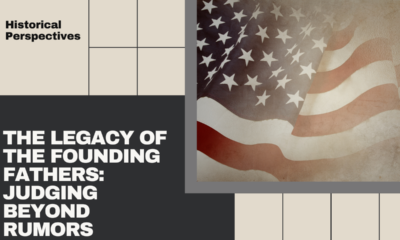
 Education4 days ago
Education4 days agoDid the Freemasons, Illuminati, Spiritualists and Mystics establish this country?
-

 Education2 days ago
Education2 days agoThe Road Back to Normalcy Starts Where the Problem Began: College Campuses





